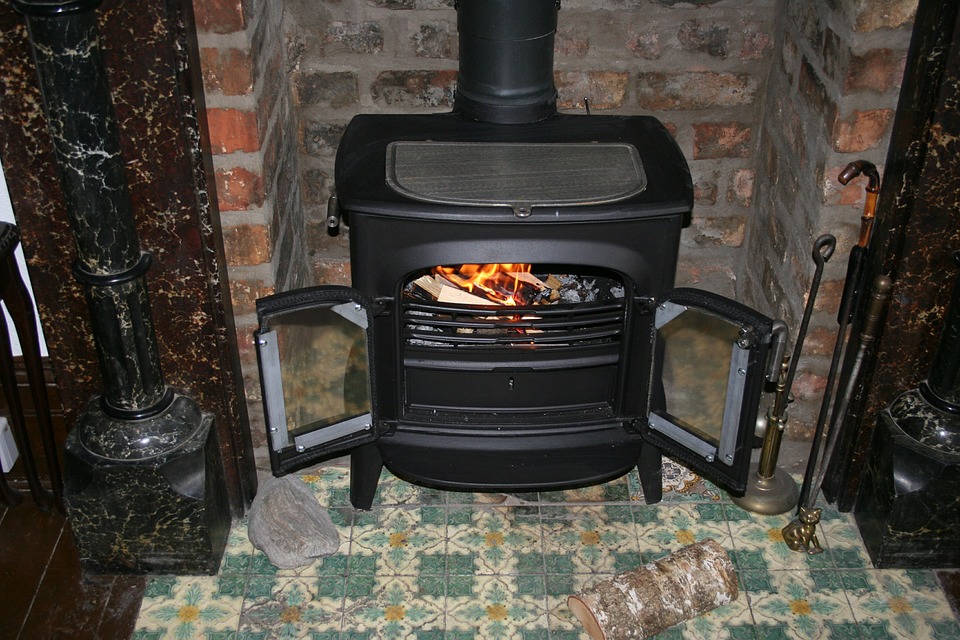Prepper essentials: 5 Things to consider before getting a wood-burning stove
07/26/2021 / By Virgilio Marin

Preppers are aware of how important a wood-burning stove is during SHTF. You can use this prepping essential to cook food, keep yourself warm, light your home and even dry your laundry indoors.
A wood-burning stove also has benefits even on normal days when there is enough fuel and electricity to power a gas or electric stove. It’s said to be sustainable since you’re burning wood, which is considered a renewable resource. Some also say that it can save you money since you don’t have to pay for fuel. You can simply retrieve some in the woods and chop them in your backyard.
So should you switch full-time to a wood-burning stove even before SHTF? Below are some of the pros and cons of a wood-burning stove that you should consider before making that pre-disaster switch. (h/t to Prepper-Resources.com)
Pro: The right fire starters can be anything
A wood-burning stove affords you flexibility when it comes to which items you can use as tinder and kindling. For instance, pine cones and brown paper bags are excellent fire starters and are widely available. If you live near the woods, you can just go there and pick up pine cones. Meanwhile, you can save the paper bags from your last trip to the grocery store.
Con: Wood-burning stove does not really save you money
The wooden logs that you’ll be taking from the woods are not really free. While you can just go to the nearby forest and grab lumber without paying, those wooden logs are not going to chop themselves and walk to wherever your home is. You have to do dirty work yourself by felling trees, hauling the lumber home and chopping it into small chunks of wood to get the fuel.
That can be time-consuming and labor-intensive. If you wish to avoid it, the best alternative is to buy a $250 cord of wood from a retailer. If you burn up four cords every winter, then you should be prepared to dispense $1,000 for the season alone. That does not include other expenses, such as the structure needed to hold the wood.
Once you’ve taken these costs into consideration, you’ll realize that using a wood-burning stove does not necessarily mean that your gas bill will be cheap.
Pro: A wood-burning stove can be used for other things
It’s commonly used for cooking and keeping a place warm, but a wood-burning stove can also be used for other things. For example, you can use the stove to dry your laundry or dehydrate food. You can also place a water-filled cast-iron pot on top of your stove to add moisture to the air inside your house. That pot acts as a humidifier due to the heat coming from your stove.
Con: Paid inspections are necessary
You can remove the ash in your stove by yourself and perform other simple maintenance tasks. But every now and then, you need to pay a professional to inspect and proof your wood-burning stove to keep it in good condition. This is another expense but it’s very important because the stove can burn your house to the ground if things are not in working order.
Pro: You have peace of mind when SHTF
One of the biggest advantages of using a wood-burning stove before SHTF is that you’re always prepared for an unexpected disaster. You don’t have to worry about how to cook food, keep your place warm and light your home. (Related: No power, no problem: 5 Ways to stay warm when the power is out.)
Using a wood-burning stove is not exactly the cost-effective alternative that it’s thought to be. But cost aside, this prepping essential is extremely useful regardless of whether you’re in a survival situation or not.
Sources include:
Tagged Under: disaster, fuel, green living, homesteading, off grid, preparedness, prepper, prepping, prepping essentials, SHTF, survival, survival shelter, survivalist, sustainable living, wood burning stove
RECENT NEWS & ARTICLES
COPYRIGHT © 2017 OFFGRID NEWS




















